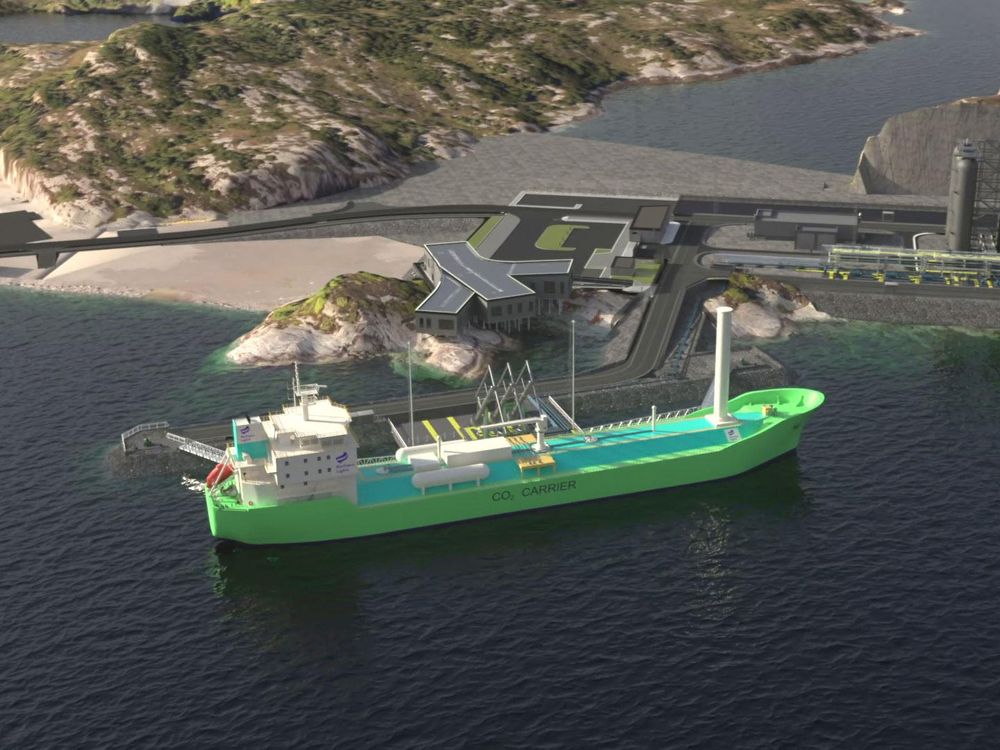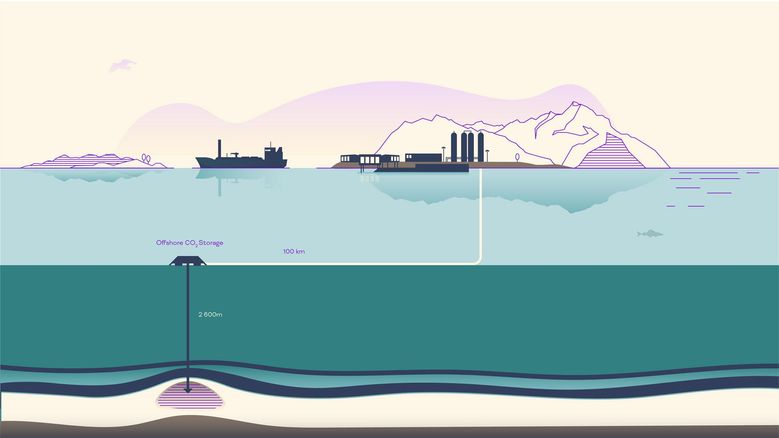
The Japanese shipbuilding giant joins a list of ambitious projects that plan to ship CO2 from the power plants and factories where it’s emitted to sites where the gas can be used or permanently stored. By providing a cost-effective option to transport the greenhouse gas, CO2 shipping could provide an impetus for large-scale deployment of carbon capture utilization and storage (CCUS).
Carbon capture is picking up steam around the world as heavy industries and power plants try to meet emissions-reductions targets. Twenty-seven commercial CCUS projects are operational as of 2021, with another 108 in the pipeline. And while technologies for capturing CO2 or utilizing it to make chemicals and fuels get a lot of attention, transport of the greenhouse gas is critical but often overlooked.
Pipelines are good for moving CO2 over short distances, but get increasingly expensive with increasing distance. Ships, on the other hand, could safely transport varying amounts of CO2 over long ranges for a relatively low cost, says Toby Lockwood, a carbon capture technology and markets expert at the Clean Air Task Force in London. Shipping is especially appealing for places like the EU, UK, and Japan that have a keen interest in carbon capture but don’t have the right geological formations for storage, he says. “Shipping is good for small volumes and for coastal sites, and it’s flexible and scalable.”
Mitsubishi might be the first to float its ship, but the Norwegian project Northern Lights, slated to be operational by 2024, will be the biggest and first cross-border CO2 transport and storage network. Equinor, Shell and TotalEnergies launched the project in 2021 and it has 1.7 billion Euros in funding from the Norwegian government.
China’s Dalian Shipbuilding will build two 7,500 m3 capacity carriers for Northern Lights to ship captured CO2 to be stored permanently deep in a geological reservoir under the seabed in the North Sea. By 2024, Northern Lights aims to transport and store about 0.8 million metric tons of CO2 from a cement factory and a waste-to-energy facility in Norway, with plans to expand capacity to 5 million metric tons.

When the Northern Lights project begins operations in mid-2024, ships will take captured CO2 from onshore sites to a terminal in western Norway for intermediate storage, before being piped to a reservoir under the seabed for permanent storageNORTHERN LIGHTS
The project is spurring commercial interest and is now linked with nine potential carbon capture facilities across Europe. With a recently announced partnership with carbon capture company Aker Carbon Capture it should offer companies across Europe an all-in-one value package to capture and store their emissions. “The Norwegian project is the only one that has money on the table but people are expecting it to kickstart a bigger thing,” Lockwood says.
Indeed, several other shipping companies have recently announced interest in building carriers for captured carbon transport. Japan’s NYK and the Knutsen group of Norway in January established a joint venture to develop a CO2 marine transportation and storage business. Shipping giant Mitsui O.S.K. Lines has invested in Norway’s Larvik Shipping as part of its plans to study CO2 transport for CCUS. Several shipping companies that transport liquefied natural gas (LNG), including Belgium’s Exmar, Denmark’s BW Epic Kosan, and Norway’s Hoegh, are all planning their own large-scale CO2 transport operations.
Shipping CO2 seems in general to be more of a European and Asian phenomenon, says Lockwood. But a new company called Ecolog, connected to the LNG shipper Gaslog, is now interested in large-scale shipping of CO2 between Europe and the USA as well as other places like the Middle East, he says, “which is not something I’ve heard proposed before.”
“Shipping is good for small volumes and for coastal sites, and it’s flexible and scalable.”
All these ships will carry liquefied CO2 in large pressurized cargo tanks. Liquefied CO2 is already shipped around the world for the food and beverage industry. But shipping the gas at the scales required for CCUS brings technical challenges. “There are different conditions in which it can be kept and lots of debate about the best way to keep it,” Lockwood says.
The Northern Lights ships, for instance, will carry CO2 at medium-pressure conditions of 1.5 megapascal pressure at –26°C. But that won’t work as ships get bigger, he says. The massive steel tanks needed to carry more than 10,000 m3 of CO2 at that pressure become expensive and carbon-intensive to haul,. “At some point we are going to need bigger ships and lower pressure conditions of 0.7 MPa and –15°C.”
Larger carriers should also help reduce CO2 shipping costs over time. Right now, companies have signed agreements to pay 30–50 Euros for transporting a metric ton of CO2, he says. But capture and transport costs are still a barrier for many companies. Government subsidies would help of course. But more companies with large, dedicated CO2 carriers competing for business could also boost a steadily growing CCUS ecosystem.